New video shows moment missile appears to hit Ukrainian jet as US, Canada reject Iran’s claims of mechanical failure
New footage appears to show the moment a missile hit a Ukrainian plane before it crashed in Tehran, as Scott Morrison joined the US and Canada in rejecting Iran’s claims of a mechanical failure.
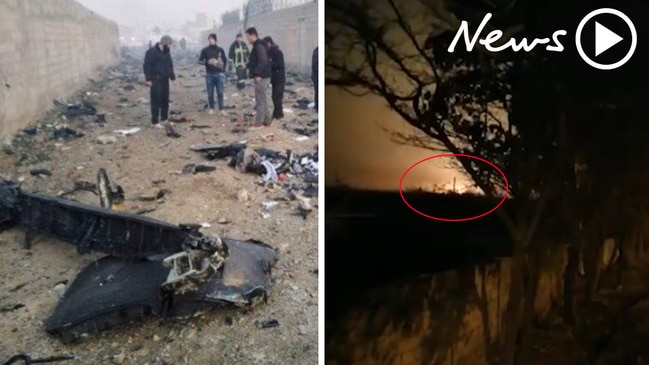
Travel Incidents
Don't miss out on the headlines from Travel Incidents. Followed categories will be added to My News.
New footage has emerged in the wake of the Ukrainian plane tragedy that appears to show a missile hitting the ill-fated jet near Tehran’s airport.
It’s believed following the small explosion seen in the video, Ukranian International Airlines Flight 752 became engulfed in flames as it turned back toward the airport before it exploded and crashed. All 176 people on board were killed.
It comes as Pentagon officials claim the jet was reportedly shot down by an Iranian anti-aircraft missile system.
Three security officials reportedly told Newsweek the plane was struck by a Russia-built Tor-M1 surface-to-air missile system.
Two of the officials said the aircraft was hit by mistake by Iranian missile systems that were active as Iran launched rockets at two US bases in Iraq, waiting for a possible counter-strike.
Canadian Prime Minister Justin Trudeau also doubled down on the claims, saying an Iranian missile downed the Ukrainian jet.
Australian Prime Minister Scott Morrison confirmed the Canadian reports that the plane was shot down.
“Well, I can confirm that we have had similar intelligence, as our partners have,” he said on 2GB radio.
“This is not a deliberate act as we can determine.
“It’s a terrible accident.”
Mr Morrison said it was important Iran cooperate with an inquiry into the incident.
“The black box can be recovered. That will be important for that inquiry,” he said.
Mr Morrison said he had spoken to Canadian Prime Minister Justin Trudeau yesterday, and at a later press conference said he had offered Mr Trudeau any assistance he required.
He reiterated that Australian intelligence suggested that tragic event was an accident and warned against travel to Iran.
Mr Morrison was due to speak to Ukranian PM Oleksiy Honcharuk later today.
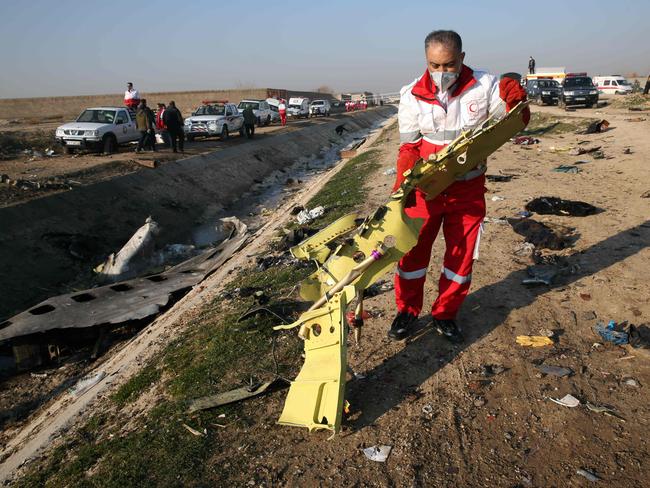
The crash came just a few hours after Iran launched a ballistic missile attack against Iraqi military bases housing US troops amid a confrontation with Washington over the US drone strike that killed an Iranian Revolutionary Guard general last week.
The officials, citing US intelligence, spoke on the condition of anonymity to discuss sensitive information.
They said they had no certain knowledge of Iranian intent. But they said it could very well have been a mistake, and that the airliner was mistaken for a threat.
US President Donald Trump suggested he believes Iran was responsible but wouldn’t directly lay the blame on Tehran, but dismissed the initial claims that it was a mechanical issue.
“Somebody could have made a mistake on the other side,” Mr Trump said, noting the plane was flying in a “pretty rough neighbourhood.”
“Some people say it was mechanical,” Mr Trump added. “I personally don’t think that’s even a question.”
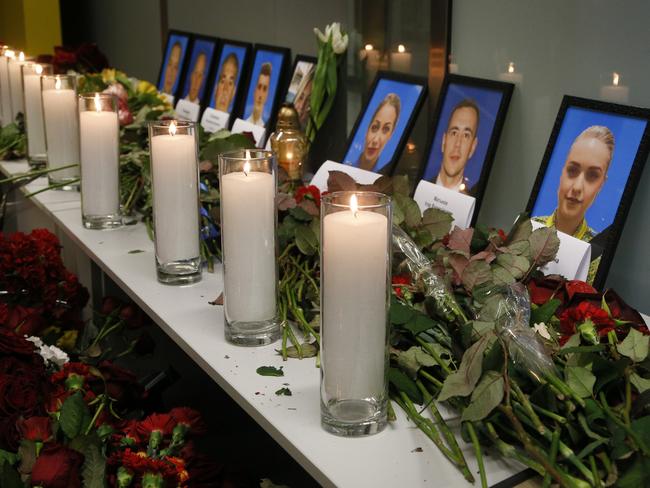
The US officials wouldn’t say what intelligence they have that points to an Iranian missile. But they acknowledged the existence of satellites and other sensors in the region, as well as the likelihood of communications intercepts and other similar intelligence.
The US assessment comes after a preliminary Iranian investigative report released on Thursday (local time) said the pilots never made a radio call for help and claimed the aircraft was trying to turn back for the airport when it went down.
Ukraine, meanwhile, said it considered a missile strike as one of several possible theories for the crash, despite Iran’s denials.
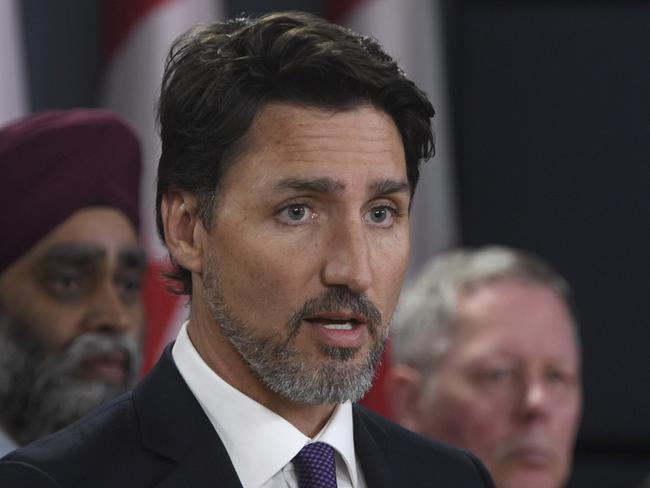
Mr Trudeau said Canadian and allied intelligence supports the conclusion of a missile strike. He declined to get into the specific intelligence, but said it appeared it was a surface-to-air missile that struck the plane.
“We have intelligence from multiple sources including our allies and our own intelligence. The evidence indicates that the plane was shot down by an Iranian surface-to-air missile,” Mr Trudeau told a news conference.
He added: “This may well have been unintentional.”
At least 63 Canadians were on the plane.
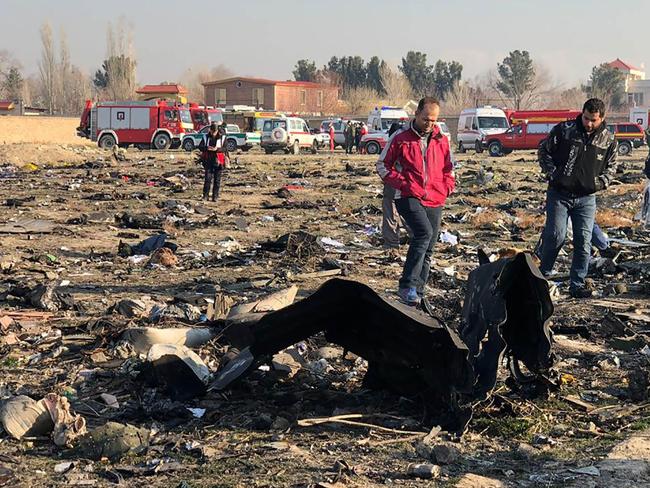
The Iranian report suggests that a sudden emergency struck the Boeing 737 operated by Ukrainian International Airlines late on Tuesday, when it crashed, just minutes after taking off from Imam Khomeini International Airport in Tehran.
Investigators from Iran’s Civil Aviation Organisation offered no immediate explanation for the disaster, however.
Iranian officials initially blamed a technical malfunction for the crash, something initially backed by Ukrainian officials before they said they wouldn’t speculate amid an ongoing investigation.
CRASH HAPPENED ‘MINUTES’ AFTER TAKE-OFF
The Ukrainian International Airlines took off at 6.12am (3.12pm AEDT) on Wednesday, Tehran time, after nearly an hour’s delay at Tehran’s Imam Khomeini Airport, the main airport for travellers in Iran.
It gained altitude heading west, reaching nearly 2400 metres, according to both the report and flight-tracking data.
Then something went wrong, though “no radio messages were received from the pilot regarding unusual situations,” the report said.
In emergencies, pilots reach out to air-traffic controllers to warn them and to clear the runway for their arrival, though their first priority is to keep the aircraft flying.
Eyewitnesses, including the crew of another flight passing above it, described seeing the plane engulfed in flames before crashing at 6.18am (3.18pm AEDT), the report said.
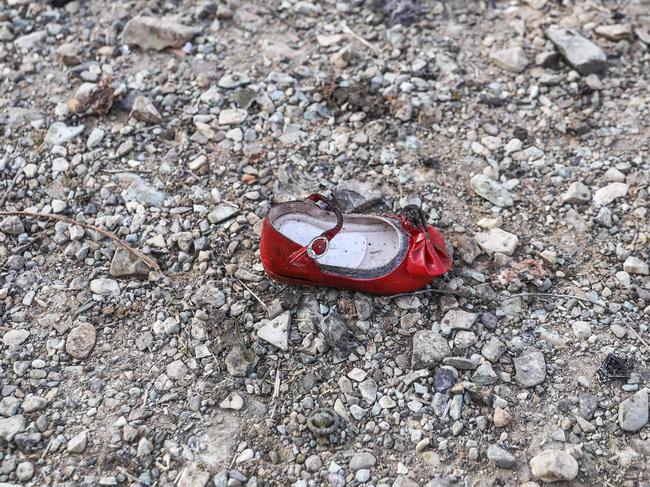
Flight-tracking data for the plane stopped before the crash, which occurred in the town of Shahedshahr to the northeast of the plane’s last reported position.
That’s the wrong direction of the flight plan, bolstering the report’s claim that the pilots tried to turn the aircraft back to the airport.
The crash caused a massive explosion when the plane hit the ground, likely because the aircraft had been fully loaded with fuel for the flight to Kiev, Ukraine.
The report also confirmed that both of the so-called “black boxes” that contain data and cockpit communications from the plane had been recovered, though they sustained damage and some parts of their memory was lost.
It also said that investigators have initially ruled out laser or electromagnetic interference as causing the crash.
Hours before the plane crash the US Federal Aviation Administration had issued an emergency flight restriction barring US carriers and pilots from flying over areas of Iraqi, Iranian and some Persian Gulf airspace, warning of the “potential for miscalculation or mis-identification” for civilian aircraft due to heightened political and military tensions.
Oleksiy Danilov, secretary of Ukraine’s Security Council, told Ukrainian media that officials had several working theories regarding the crash, including a missile strike.
“A strike by a missile, possibly a Tor missile system, is among the main (theories), as information has surfaced on the internet about elements of a missile being found near the site of the crash,” Mr Danilov said.
He did not elaborate on where he saw the information on the internet.
Ukrainian investigators who arrived in Iran earlier on Thursday await permission from Iranian authorities to examine the crash site and look for missile fragments, Mr Danilov said.

The Tor is a Russian-made missile system. Russia delivered 29 Tor-M1s to Iran in 2007 as part of a $US700 million ($A1 billion) contract signed in December 2005. Iran has displayed the missiles in military parades as well.
Iran did not immediately respond to the Ukrainian comments.
However, Gen. Abolfazl Shekarchi, the spokesman of the Iranian armed forces, denied a missile hit the aeroplane in a comment reported on Wednesday by the semi-official Fars news agency.
He dismissed the allegation as “psychological warfare” by foreign-based Iranian opposition groups.
Ukraine has a grim history with missile attacks, including in July 2014 when one such strike downed a Malaysian Airlines flight over eastern Ukraine, killing all 298 people aboard, including 28 Australians.
Mr Danilov also said other possible causes under consideration included a drone or another flying object crashing into the plane, a terrorist attack or an engine malfunction causing an explosion.
However, no terror group has claimed responsibility for the attack and the plane was only three years old.
Oleksandr Zaporozhchenko, a mechanic with the Ukraine International Airlines in 2016-2018, said he knew one of the crew members of the plane and had never heard any complaints about the aircraft.
“It is one the most reliable planes out there,” Mr Zaporozhchenko told reporters.

UKRAINE WANTS ‘TRUTH’ BEHIND CRASH
Ukraine’s President Volodymyr Zelensky announced a day of national mourning on Thursday (local time), promising to find the “truth” about the crash.
“January 9 has been decreed a day of national mourning,” the Ukrainian leader said in a video address posted on his official Facebook account.
Mr Zelensky cut short a trip to Oman and flew back to Ukraine after the incident.
It was the first fatal crash of the country’s largest carrier, Ukraine International Airlines.
“Ukraine’s priority is to establish the causes of the catastrophe. We are undoubtedly going to get to the truth,” Mr Zelensky said.
Some 45 Ukrainian security officials and experts flew to Tehran early on Thursday to participate in the investigation, including “deciphering the black boxes” discovered by Iranian authorities at the crash site, Mr Zelensky said.
They will also seek to identify the Ukrainian victims with a view to repatriating their remains.
Those who died on Flight PS752 were mostly Iranian and Canadian nationals, but they also included 11 Ukrainians.
These included nine crew members, whose photos were displayed at the departure hall in the Borispyl airport in a tribute.
The president’s office issued a photo of Mr Zelensky laying a bouquet of roses at the impromptu memorial.
He called on the public to “refrain from all manipulation, speculation and conspiracy theories” about the crash.
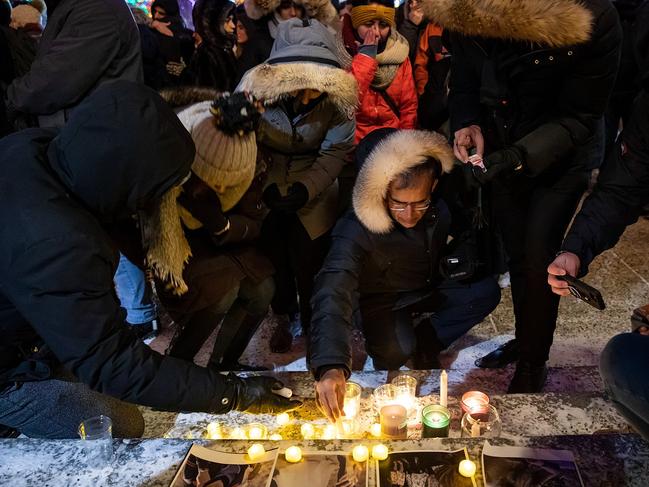
IRAN REFUSES TO HAND OVER BLACK BOX
On Wednesday, Iran refused to hand over the black boxes of the doomed flight.
Iran’s Civil Aviation Organisation head Ali Abedzadeh refused to release the crucial black box flight recorders.
“We will not give the black boxes to the manufacturer (Boeing) and the Americans,” he said.
Mr Zelenskyy said: “Our priority is to establish the truth and those responsible for this terrible catastrophe.”
A child’s shoe was pictured at the scene of the crash.
The vast majority of the passengers on the Ukraine International Airlines flight were non-Ukrainians.
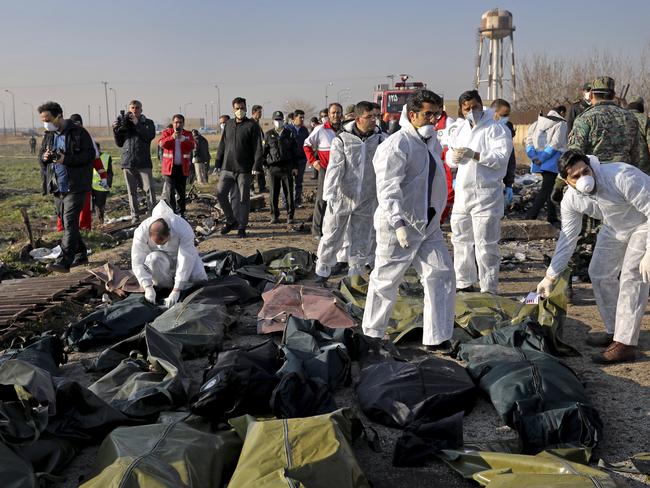
Canadian Prime Minister Justin Trudeau, who offered his “deepest condolences” to the victims, promised to get answers for the dead and to “ensure that this crash is thoroughly investigated, and that Canadians’ questions are answered”.
The victims of the crash included 82 Iranians, 63 Canadians, 11 from the Ukraine, 10 from Sweden, four from Afghanistan, three from Germany, and three from Britain.
There were 26 children on board, according to the flight manifest.
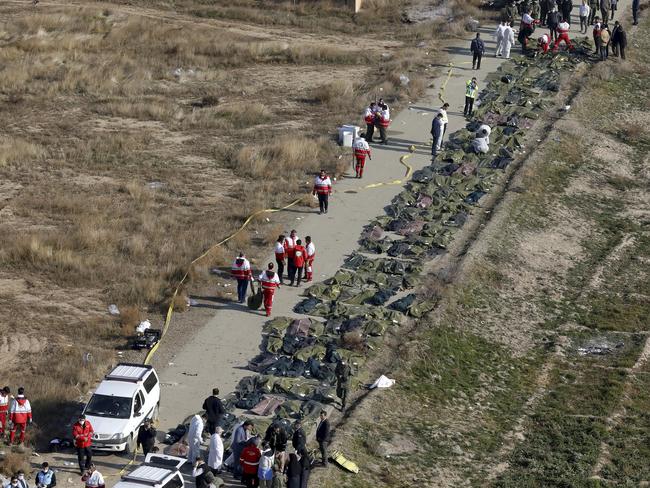
The British victims were named as engineer Sam Zokaei, from Surrey, near London, Saeed Tahmasebi Khademasadi, from west London, and Mohammad Reza Kadkhoda Zadeh, from near Brighton, south of London.
Britain’s Foreign Secretary Dominic Raab shared his sorrow.
“I would like to express the UK’s deepest condolences to all the families of the victims of the UIA crash,” he said.
“This is a tragic loss of life for all countries affected. Foreign Office staff are assisting the families of British victims at this difficult time.”


OTHER INCIDENTS
While the Boeing 737-800 was not involved in previous crashes in Ethiopia and Indonesia, it has been involved in a number of other aviation incidents.
In September 2018, Air Niugini flight PX56 crashed into the sea on its approach to Chuuk International Airport on the island of Weno in the Federated States of Micronesia, and passengers were forced to swim for their lives as the plane started taking on water.
MORE NEWS
Trump: Iran appears to be standing down
Jailed Aussie facing ‘another kind of hell’ in Iran
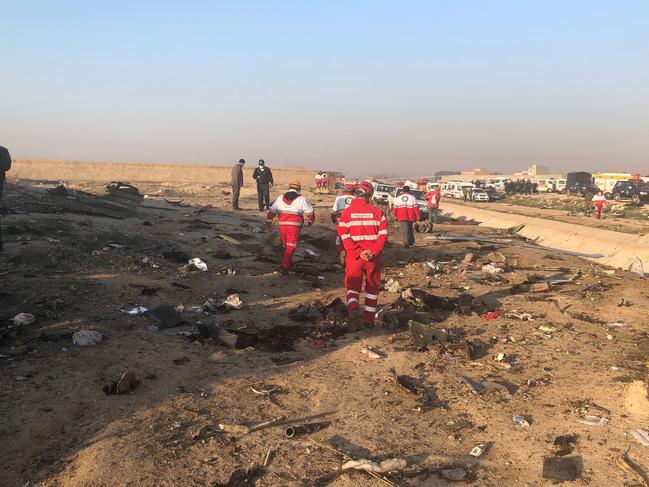

Initially the airline announced all 48 occupants survived but it was later revealed an Indonesian man died during the incident.
Ukrainian International Airlines has 22 737-800 aircraft in its fleet of 38 aeroplanes. The planes have a maximum carrying capacity of 186 people.
The website AirlineRatings.com gives the airline a six out of seven safety rating.
In December the airline announced it was suspending its Boeing 777 UR-GOA aircraft while it replaced the engines, after receiving advice from the manufacturer.
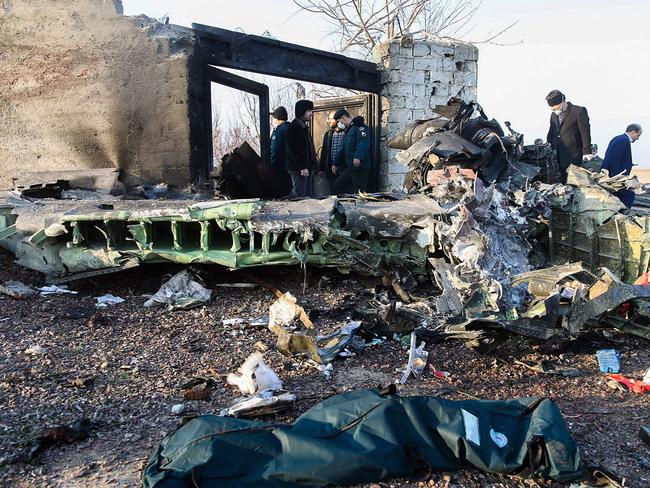
“We realise the situation affects our passengers’ holiday plans and reckon upon their understanding. The safety of our clients and crew has always been and is our top priority,” the airline’s technical director Aleksandr Shafiev said at the time.
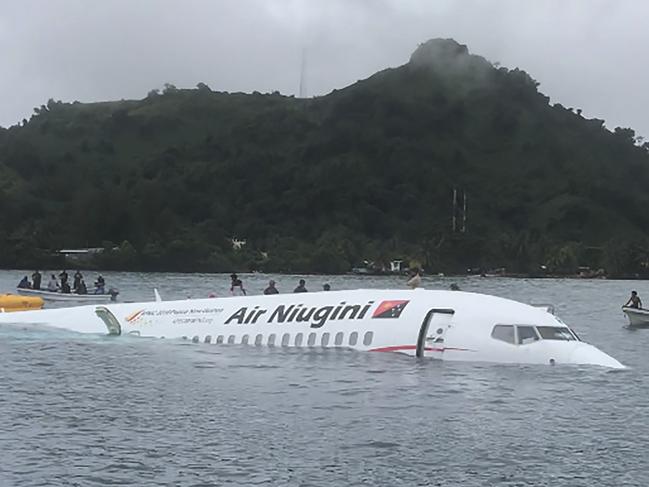
– with wires and staff writers
